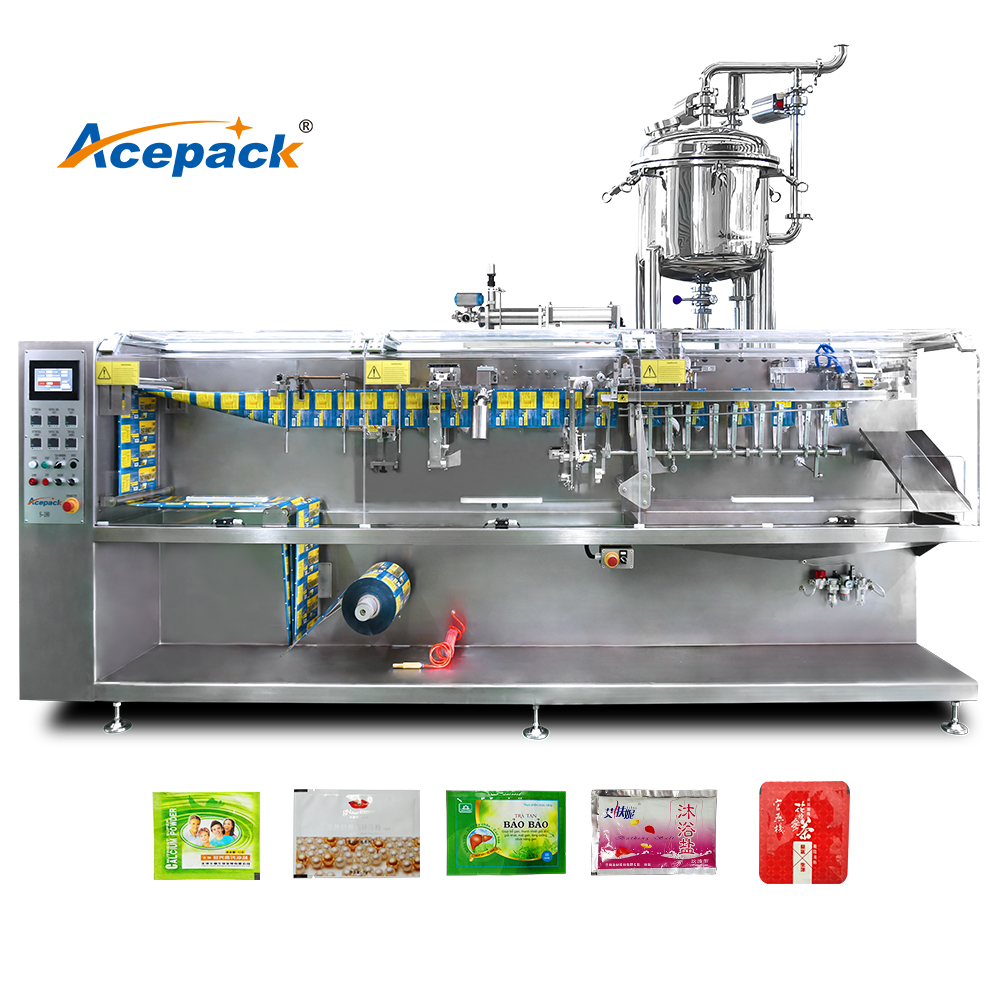 In the food industry, liquid packaging machines serve as indispensable production equipment, playing an increasingly vital role. With the escalating consumer demands for food safety, hygiene, and convenience, liquid packaging machines not only fulfill the basic packaging needs but also propel the rapid development of the food industry. This article delves into the current application of liquid packaging machines in the food industry, their technological innovations, and future prospects.
In the food industry, liquid packaging machines serve as indispensable production equipment, playing an increasingly vital role. With the escalating consumer demands for food safety, hygiene, and convenience, liquid packaging machines not only fulfill the basic packaging needs but also propel the rapid development of the food industry. This article delves into the current application of liquid packaging machines in the food industry, their technological innovations, and future prospects.
I. Current Application of Liquid Packaging Machines in the Food Industry
Liquid packaging machines are widely used in the production and packaging of various liquid foods, including beverages, dairy products, condiments, and sauces. These machines ensure food safety and hygiene through efficient filling, sealing, and packaging processes. Specifically, their applications in the food industry manifest in the following ways:
- Filling Technology: Modern liquid packaging machines employ advanced filling technologies, such as aseptic filling and hot filling, effectively preventing contamination during the filling process and extending product shelf life.
- Sealing Technology: Sealing is a crucial aspect of liquid packaging. Liquid packaging machines utilize heat sealing, cold sealing, and other techniques to achieve tight and secure seals, preventing leaks during storage and transportation.
- Diversified Packaging Formats: Beyond traditional bottles and cans, liquid packaging machines now offer a variety of packaging formats, including bags and boxes, catering to the market's demand for packaging diversity.
II. Technological Innovations in Liquid Packaging Machines
Recent technological advancements and heightened consumer expectations have driven significant innovations in liquid packaging machines:
- Automation and Intelligence: Automation and intelligence are key trends in liquid packaging machines. Equipped with advanced control systems and sensors, these machines automate the entire process from bag fetching, filling, sealing to output, significantly enhancing production efficiency and product quality. Moreover, intelligent features enable adaptive adjustments based on production needs, improving flexibility.
- Environmental Protection and Energy Saving: Amidst growing environmental awareness, liquid packaging machines prioritize energy efficiency and eco-friendliness. Design optimizations and the adoption of novel materials reduce energy consumption and emissions, aligning with national and industrial environmental policies.
- Precise Measurement: Liquid packaging machines achieve high accuracy and speed in measurement. Advanced metering systems and sensors ensure precise control of liquid volumes, minimizing waste and errors, and enhancing product market competitiveness.
III. Future Prospects of Liquid Packaging Machines in the Food Industry
Looking ahead, the prospects for liquid packaging machines in the food industry remain promising. Expanding global food consumption markets and diversifying consumer demands present both opportunities and challenges:
- Sustained Market Demand Growth: With population growth and economic development, consumer demand for liquid foods will continue to rise, offering vast market potential and growth opportunities for liquid packaging machine manufacturers.
- Technology-Driven Development: Future advancements in automation, intelligence, and environmental friendliness will further enhance machine performance, efficiency, and product quality. These innovations will reduce production costs and labor requirements, fostering healthy industry growth.
- Innovations in Packaging Formats and Materials: Responding to consumer demands for diverse packaging formats and materials, liquid packaging machine manufacturers will continue to introduce new solutions. These innovations will better meet market needs, boosting product competitiveness.
- Accelerated Industry Consolidation: Market competition will intensify, leading to accelerated industry consolidation. Larger enterprises will expand through mergers and acquisitions, while smaller firms must innovate and differentiate to sustain their market positions. This consolidation will elevate the industry's overall competitiveness.
In conclusion, liquid packaging machines occupy a pivotal position in the food industry. With continuous technological advancements and ever-growing market demands, the future holds immense potential for the liquid packaging machine sector. We anticipate the emergence of more innovative, efficient, and eco-friendly machines on food production lines, significantly contributing to the development and prosperity of the food industry.


 In the food industry, liquid packaging machines serve as indispensable production equipment, playing an increasingly vital role. With the escalating consumer demands for food safety, hygiene, and convenience, liquid packaging machines not only fulfill the basic packaging needs but also propel the rapid development of the food industry. This article delves into the current application of liquid packaging machines in the food industry, their technological innovations, and future prospects.
In the food industry, liquid packaging machines serve as indispensable production equipment, playing an increasingly vital role. With the escalating consumer demands for food safety, hygiene, and convenience, liquid packaging machines not only fulfill the basic packaging needs but also propel the rapid development of the food industry. This article delves into the current application of liquid packaging machines in the food industry, their technological innovations, and future prospects.
